For our second full day in Japan, we decided to go to Nikko, home of several UNESCO world heritage sites. On the way, we got our first bullet train experience. It was very clean, very timely, and very fast.
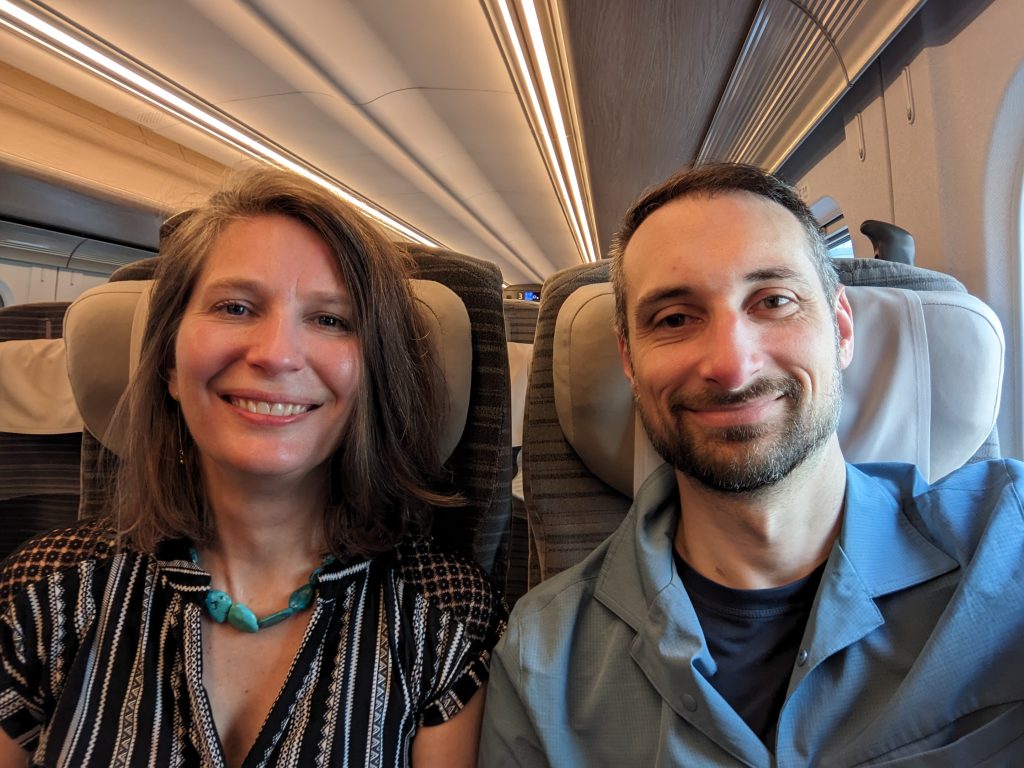

Coming out of Nikko station we were greeted with this wonderful view of the town and mountains in the distance. The first of many sites to see.
The shrines we wanted to see were quite a bit of a walk straight up that street in the picture from the train station. The street takes you through the town, slowly ascending. We saw a lot of cool shops along the way, but we didn’t have time to stop. We had a lot to see and a lot of walking ahead of us in 90+ degree heat.
The first sight was the Shinkyo bridge. According to the Visit Nikko website:
At 28 meters long and nearly eight meters wide, the beautiful, vermilion-lacquered Shinkyo Bridge sits at the entrance to the Nikko mountains. According to legend, Buddhist monk Shodo, the first head priest of Nikko, asked the mountain deities for help crossing the Daiya River, at which point two snakes appeared and transformed into a bridge. The bridge belongs to Nikko Futarasan-jinja Shrine and was designated a World Heritage site in 1999.

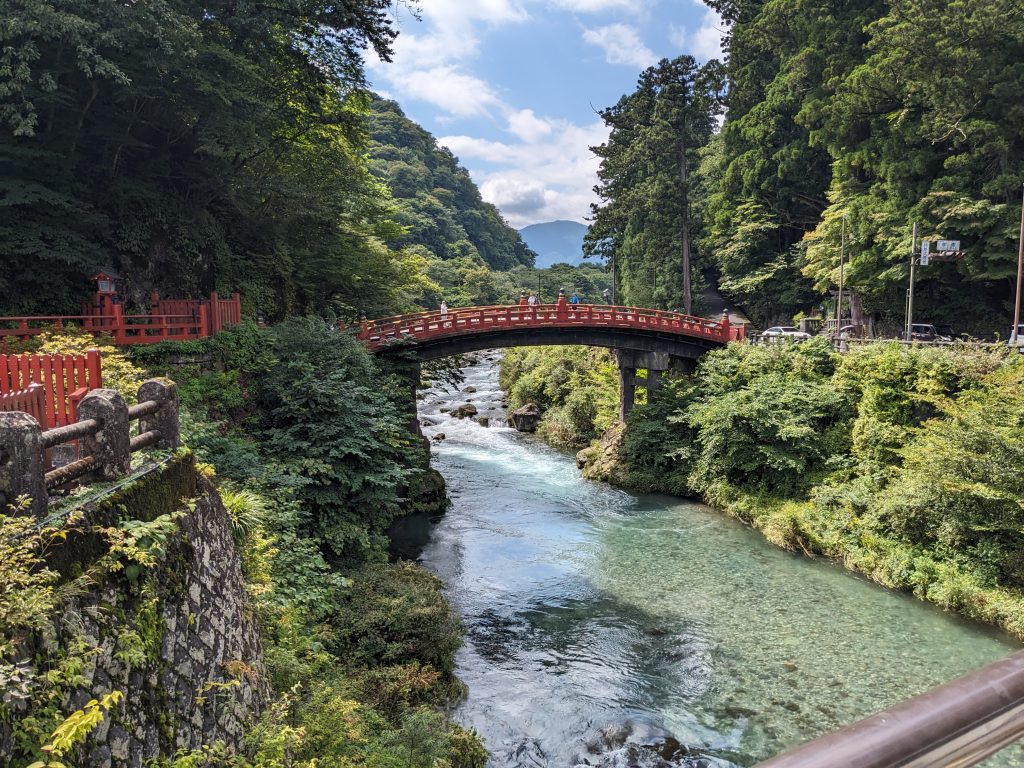

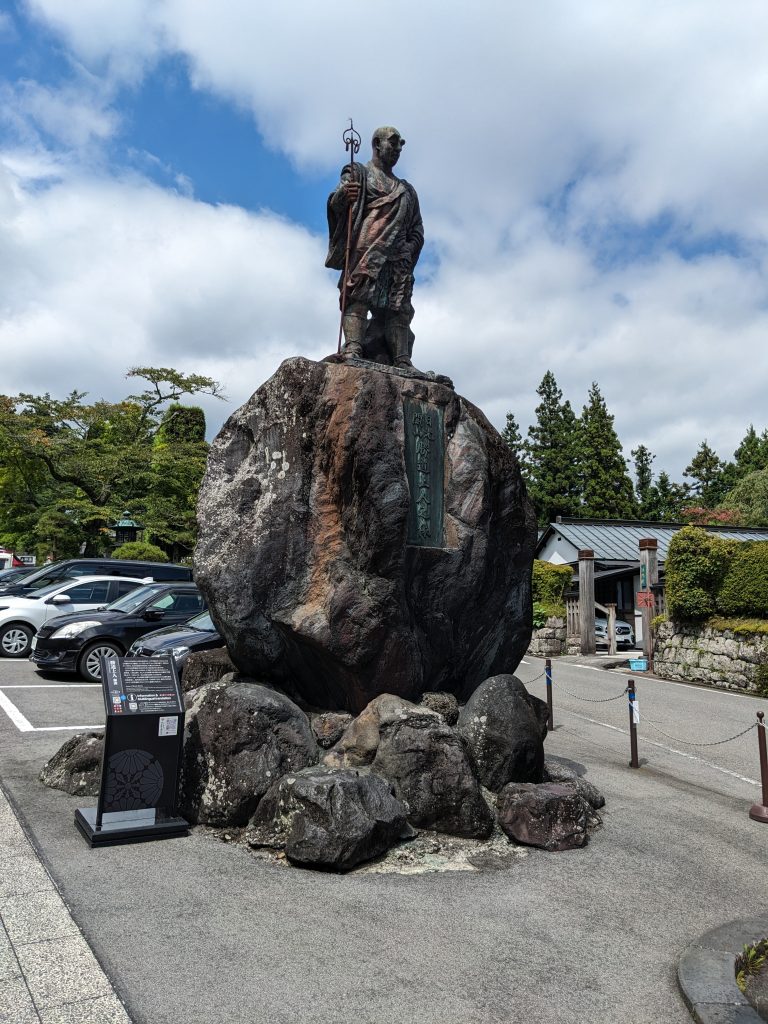
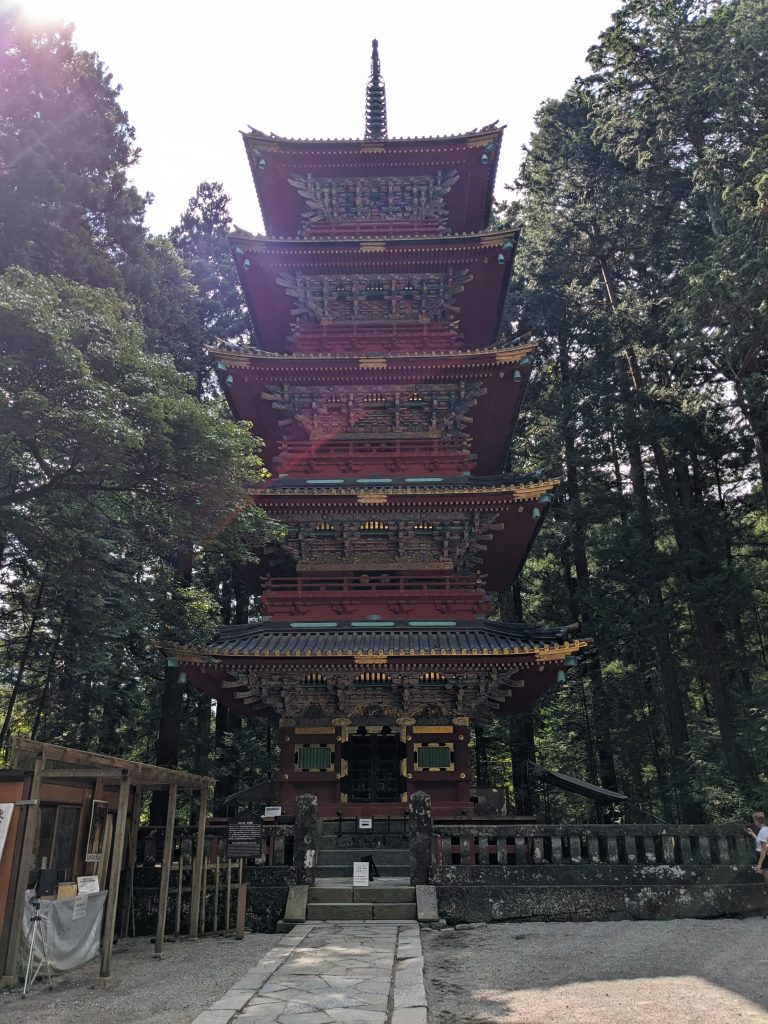
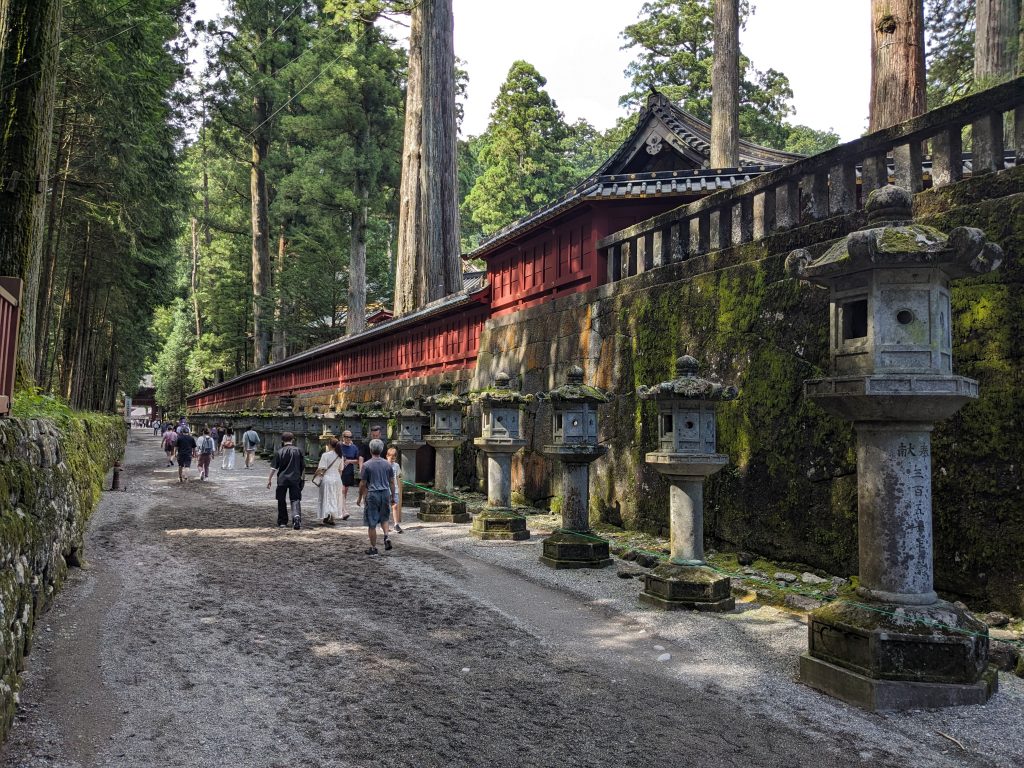
On the other side of this wall is the final resting place and shrine to the first Tokugawa Shogun, Tokugawa Ieyasu. The was an extra admission fee to this shrine and we had already paid an admission fee to get where we were for other shrines further ahead so we didn’t stop.
These large lanterns line much of the path to the final shrine, which belongs to the resting place and shrine to Tokugawa Iemitsu, the third Tokugawa Shogun. When his shrine was built all the daimyo gifted money as a tribute for the shrine. Each lantern represents that daimyo. The closer you get to the shrine, the larger and more ornate they become, representing the status, prominence, and wealth of each.
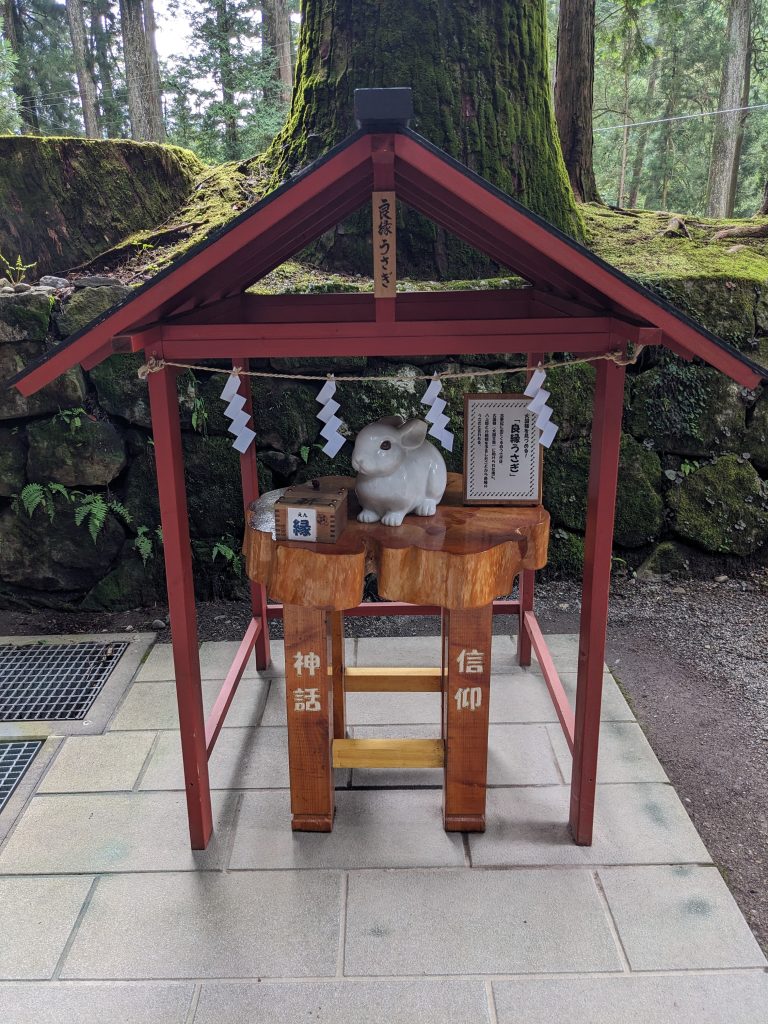
I overheard someone say that bunnies represent good luck marriage and fertility. I just thought this was cute.
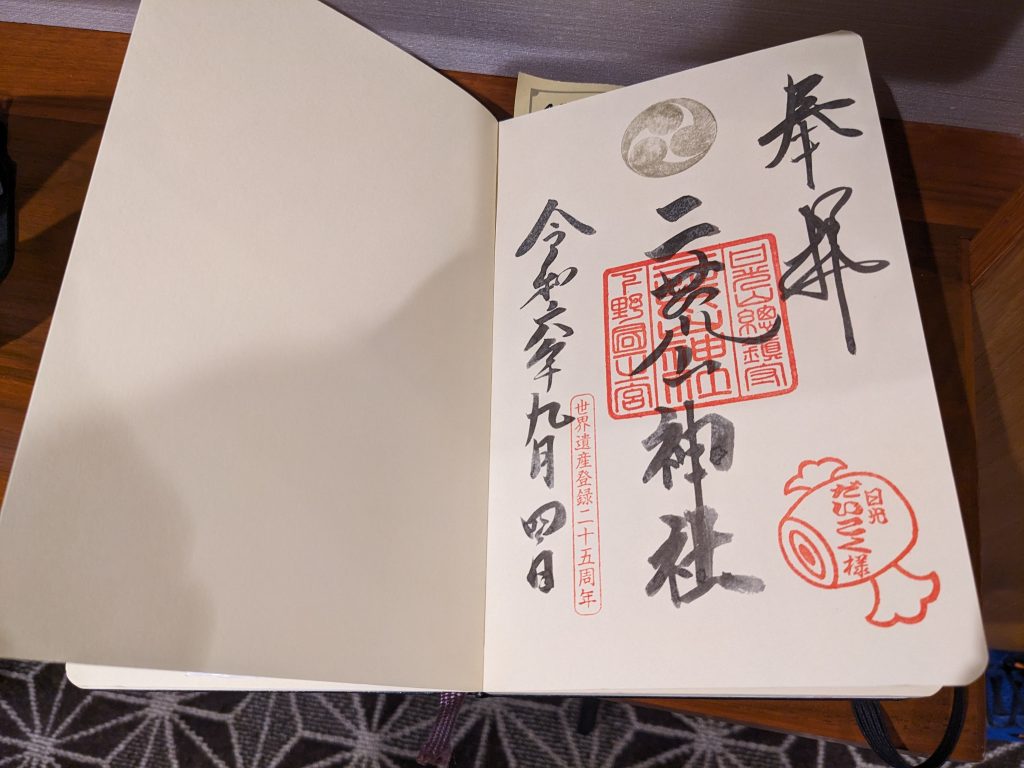
Most major shrines have a station where you can pay for a stamp to be placed in a special notebook. The stamps are called Goshuin stamps and are only half stamp. The writing is done by hand with a brush and ink.
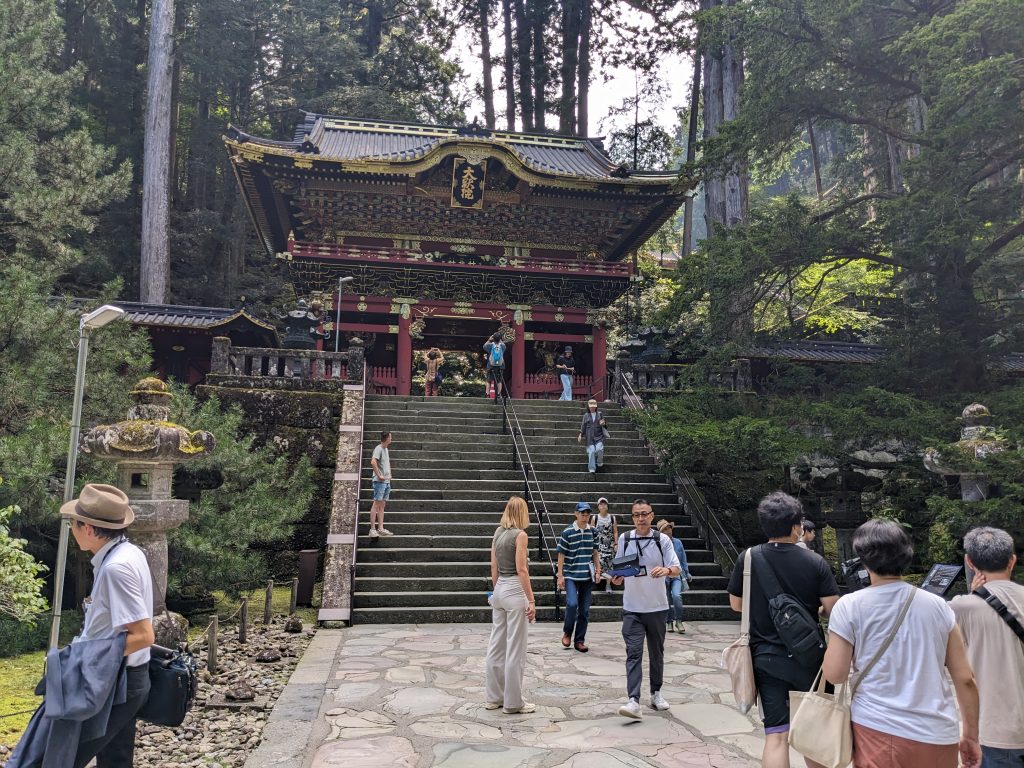
On the way to the entrance to most shrines are gates. Some are small with writing on both pillars, some, as in this case, are quite large and ornate. On either side safe statues, representing deities protecting the shrine from evil spirits entering.
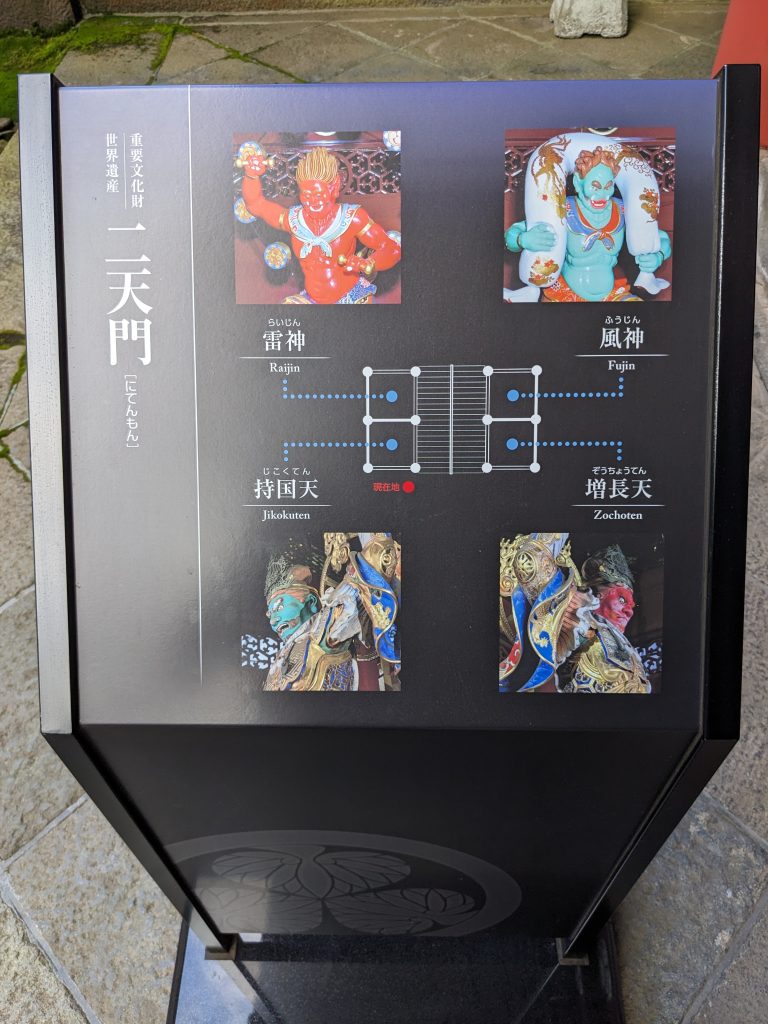
This plaque explains the deities standing guard and their respective positions.
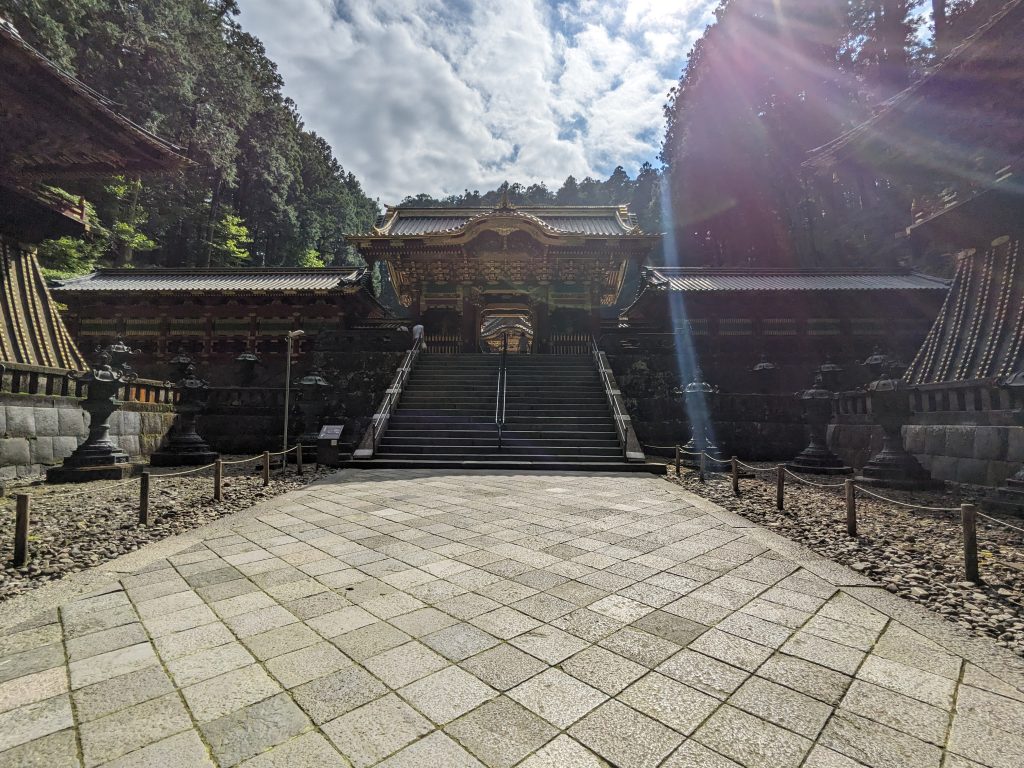
These are the final steps leading to the shrine of Tokugawa Iemitsu.
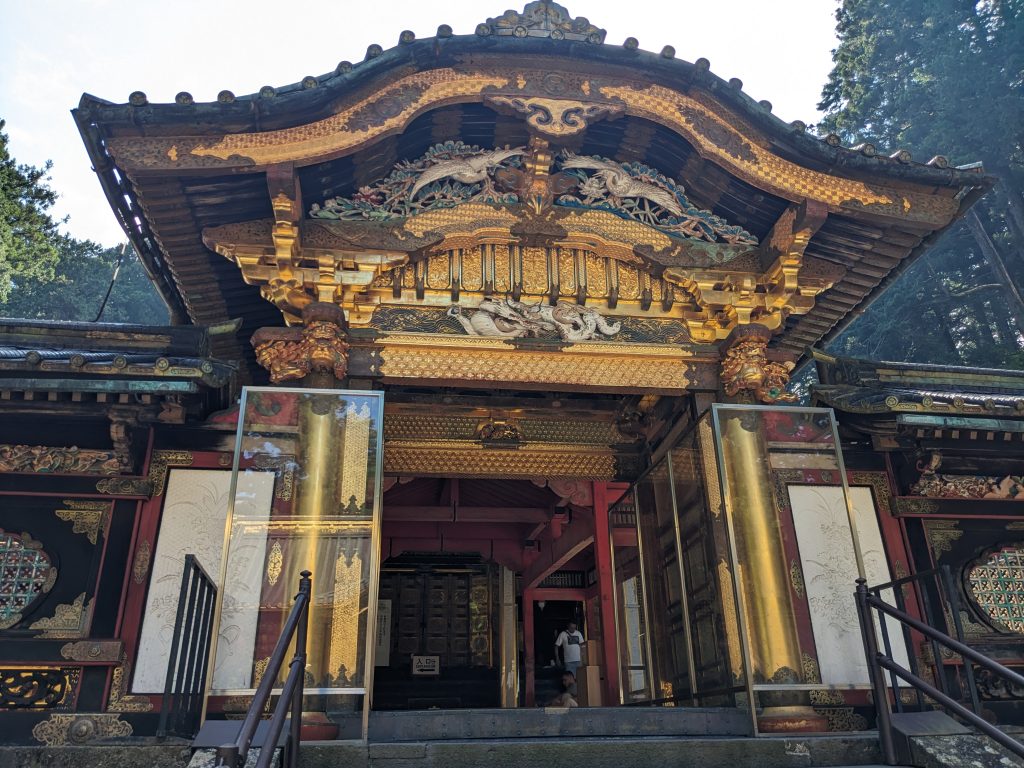
This is it. No photos inside. Just outside there is a lot the covered porch to take your shoes off and place umbrellas. The building was pretty big. We were able to walk most of the perimeter and take photos. It’s hard to express how quiet and peaceful it was at this elevation and remote location. Only the sounds of nature could be heard. It was really nice there. The area, it’s location, and how you get to it was very purposefully and well thought out.
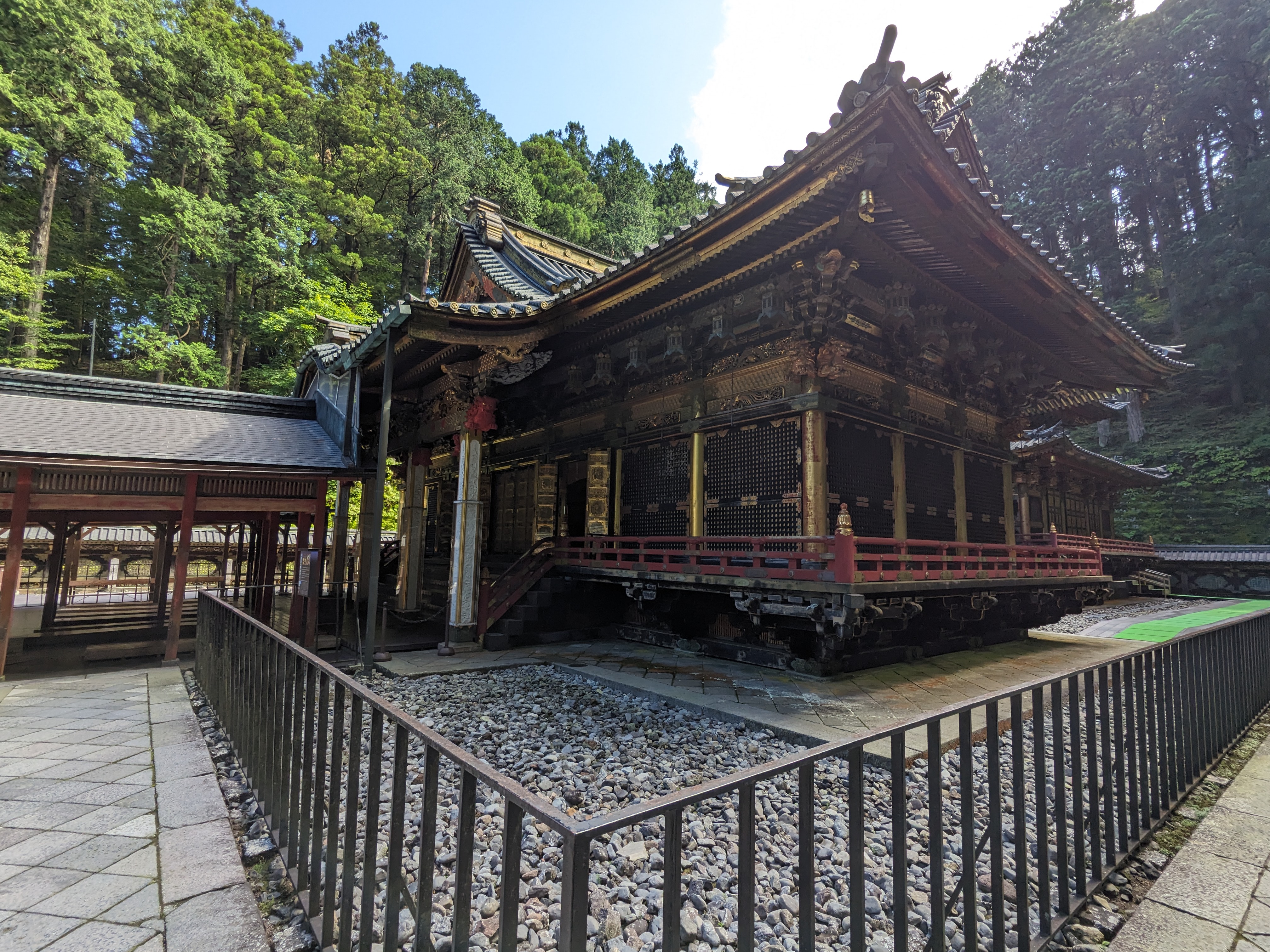
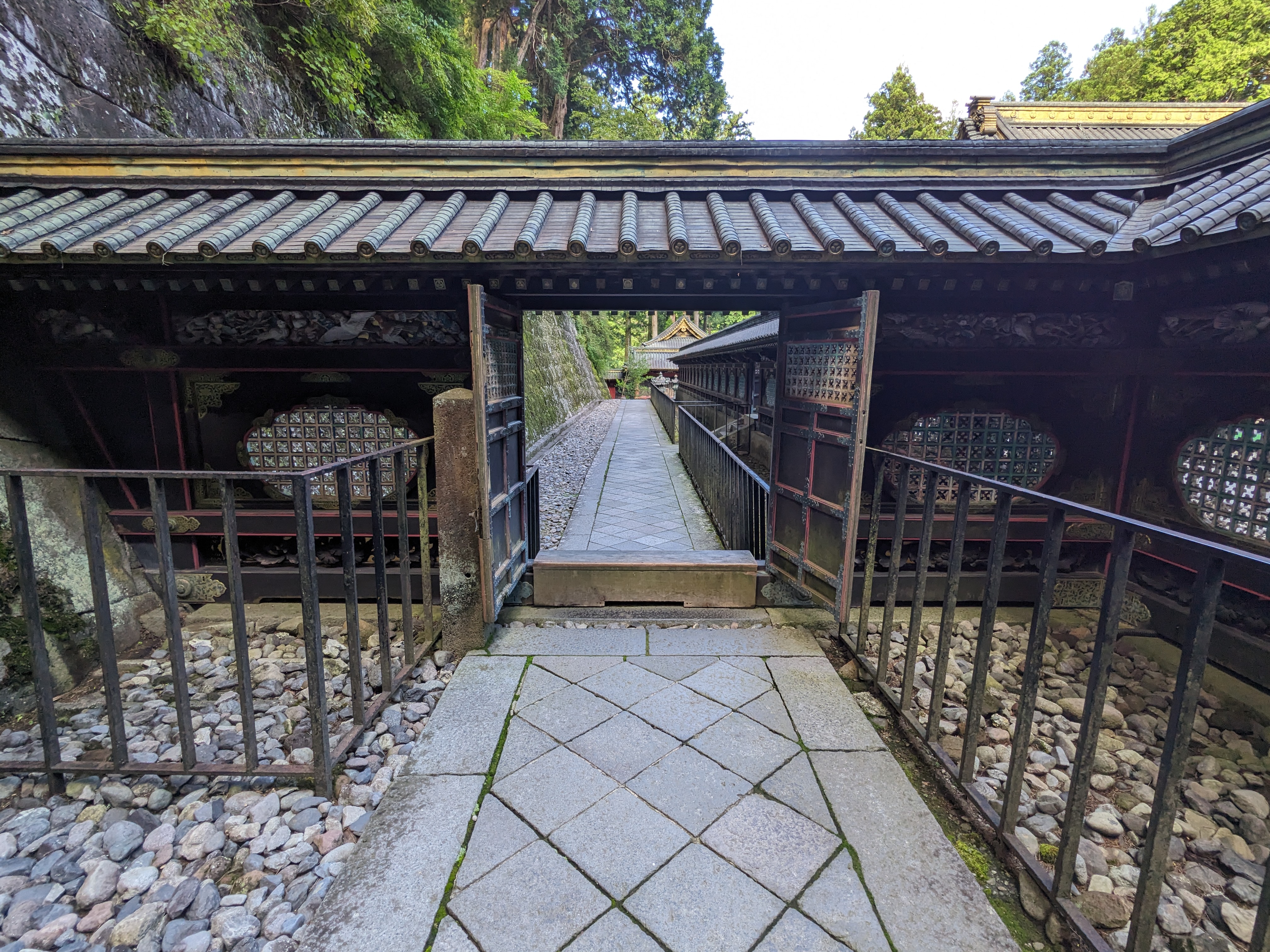

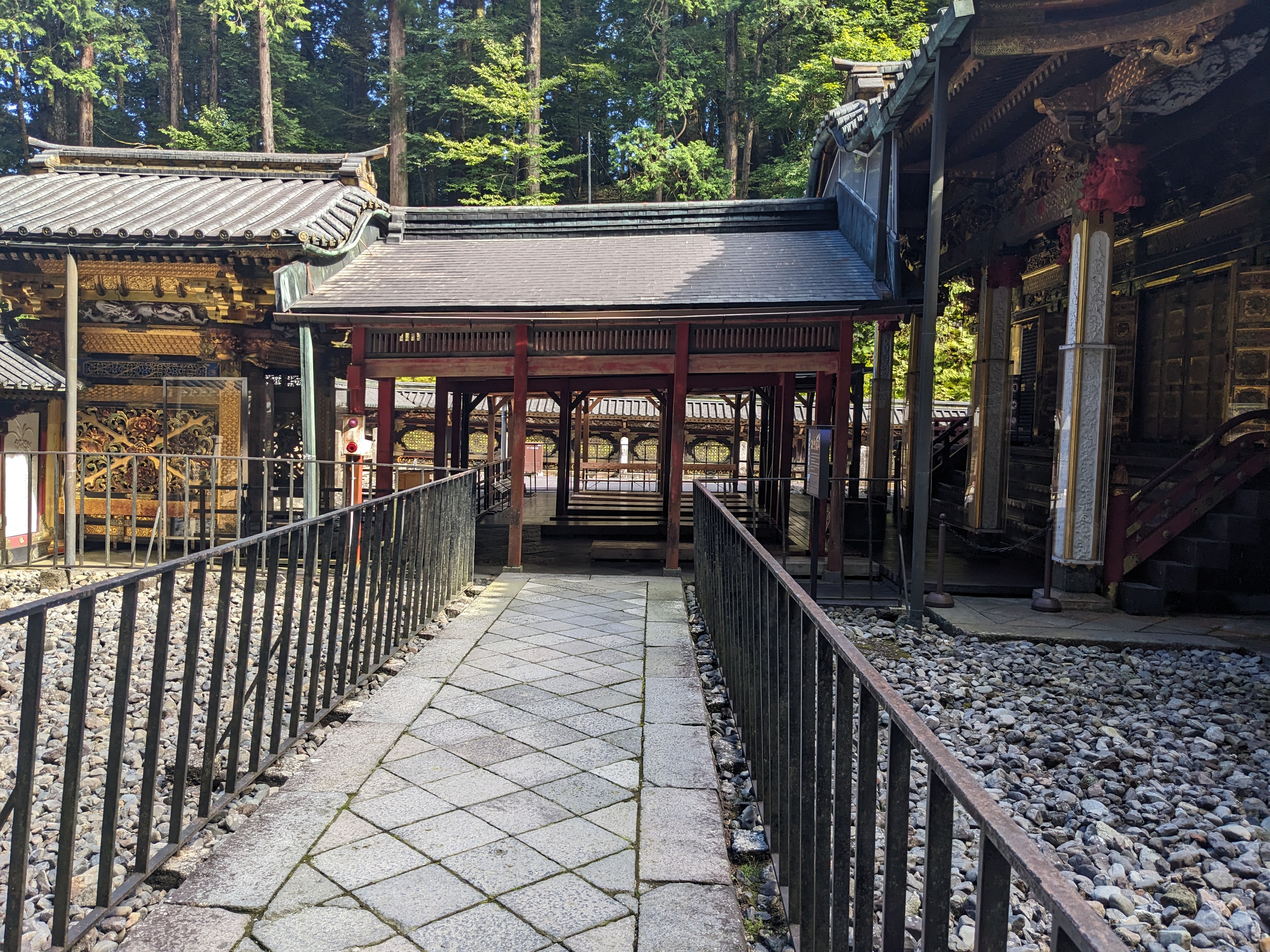
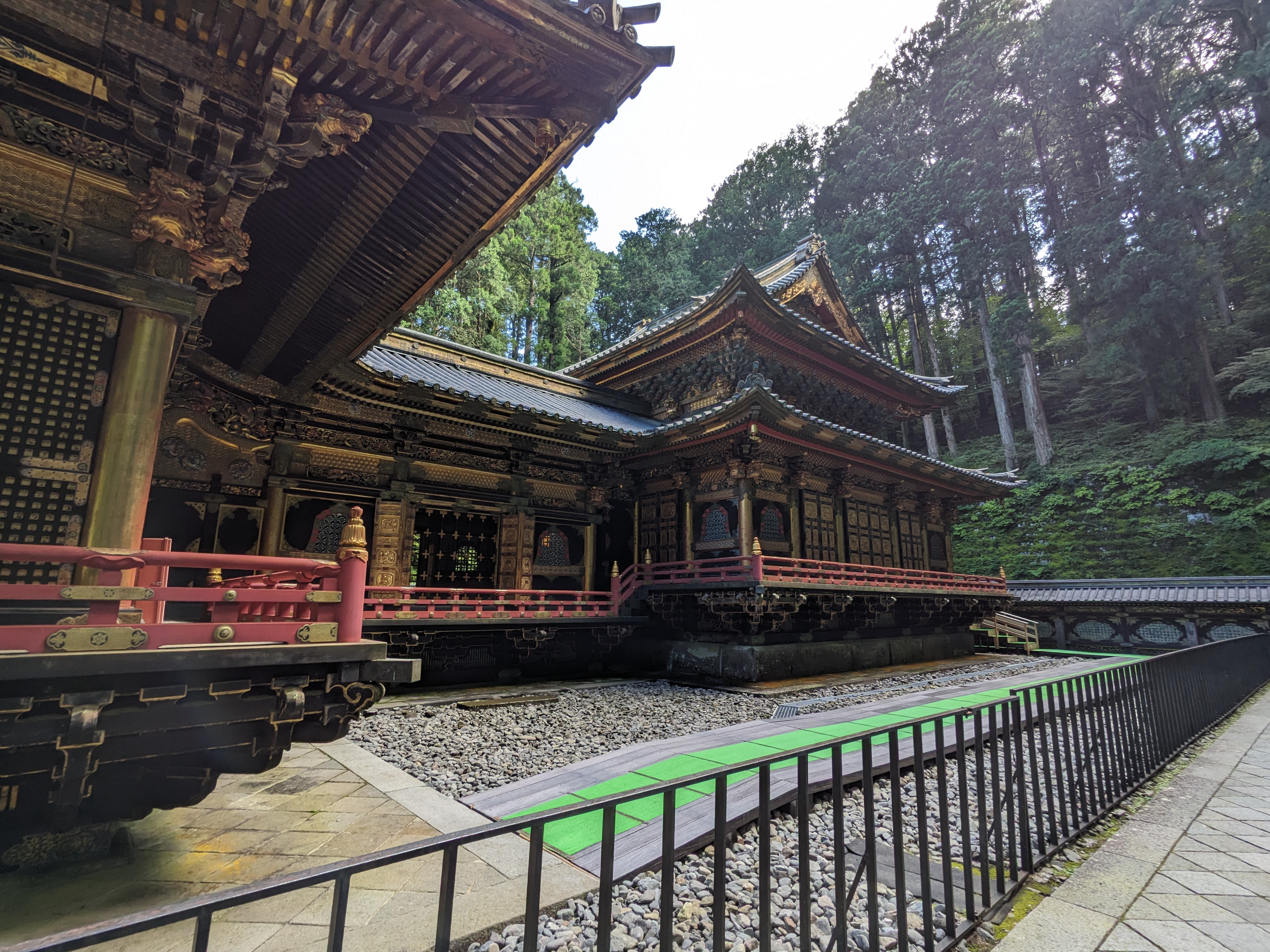
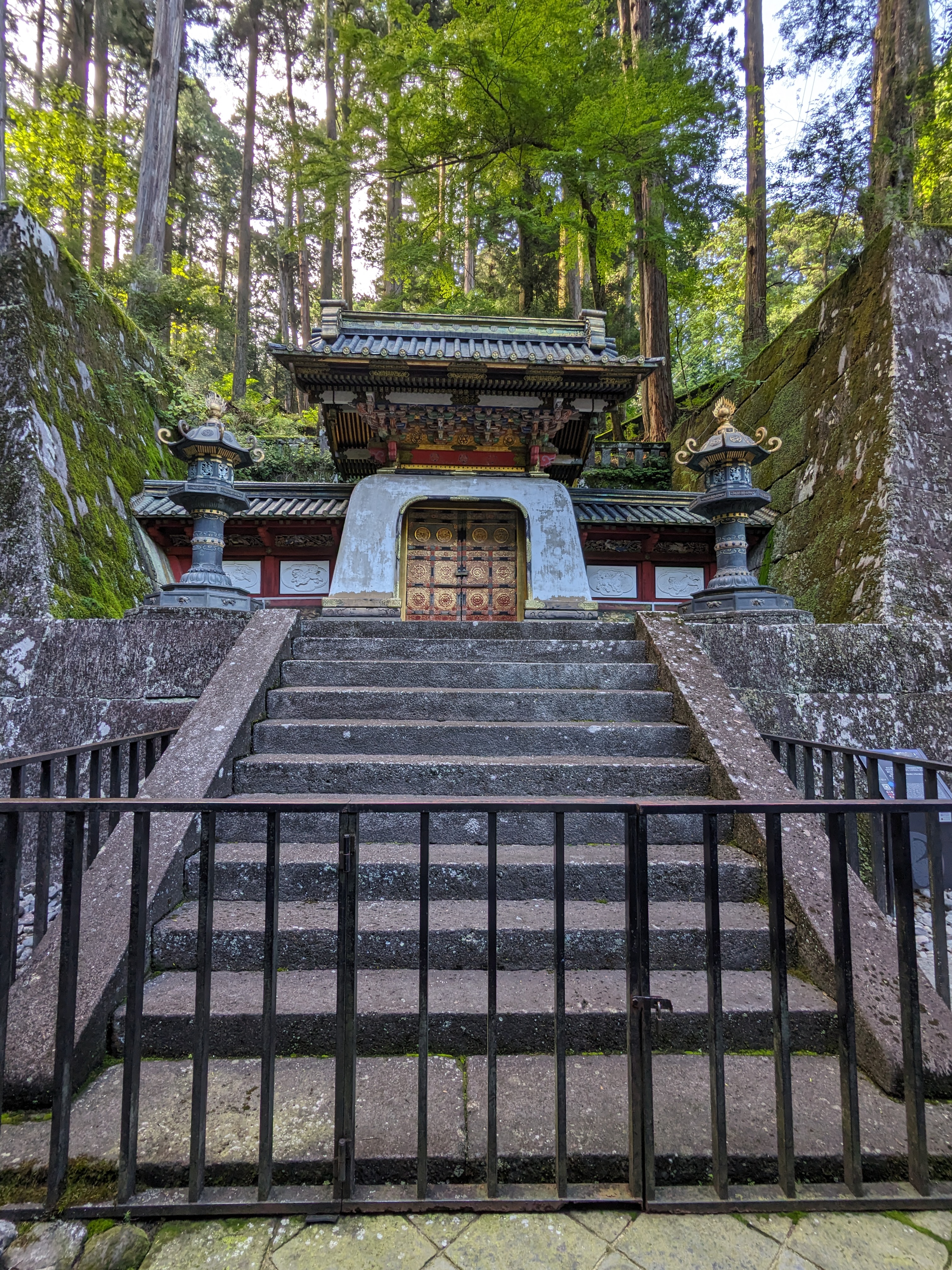
On the way back to Nikko’s train station, we stopped at the shrine’s souvenir shop and cafe. We ended up sitting down to eat a very late Udon lunch after picking up some souvenirs.
The trip back was pretty uneventful. I picked up the SIM card tool along with a few other goodies before I headed back to the hotel to crash. This ended up being a very long and active day.

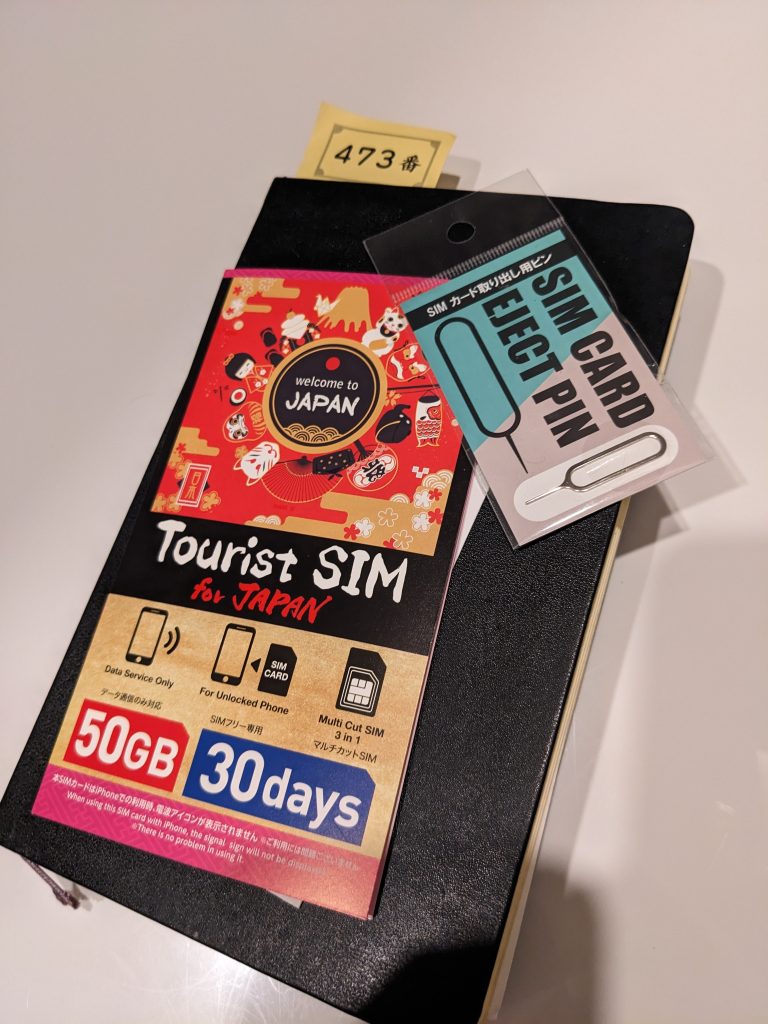
Leave a Reply